A circuit contains an ideal battery , three resistors, and tow ideal ammeters. The ammeters read 0.2 A and 0.3 A. After two of the resistors are switched, the readings of the ammeters did not change. Find the battery current.

If R2=R1,I1=I2=0.15A and I3=0.05A.
If R2=R1, the battery current is I=0.20A .
If R2=R3,I2=I3=0.1A and I1=0.2A.
IfR_2 = R_3,thebaerycurrentisI = 0.4A.
The correct Answer is:A, C, D
a., c., d.
As the ammeters are ideal, we can conclude that the three
resistors R1,R2,andR are actually connected in parallel, the
equivalent resistance being
Req=R1R2R3R1R2+R1R3+R2R3
In the figure, the electric currents on each resistors and battery
are shown. The readings of the two ammeters are different and,
consequently, by simple symmetry considerations, resistors
R1andR3 are necessarily different. In other words, if we
interchange R1andR3, the readings of the ammeters will also
be interchanged. Therefore, we have two possible alternatives.
R2=R1 (if resistors R2andR1 switched, the readings of the
ammeters do not vary) or R2=R3(R2 and R3 can be switched
and the ammeters do not change.) The two solutions are :
If R2=R1 we obtain I2=I3=0.1A and I1=0.2A, and the
battery current is I=0.4A.
Topper's Solved these Questions
- MISCELLANEOUS VOLUME 3BOOK - CENGAGE PHYSICS ENGLISHCHAPTER - MISCELLANEOUS VOLUME 3EXERCISE - Assertion and Reason
8 Videos
- MISCELLANEOUS VOLUME 3BOOK - CENGAGE PHYSICS ENGLISHCHAPTER - MISCELLANEOUS VOLUME 3EXERCISE - Integer Answer Type
11 Videos
- MISCELLANEOUS VOLUME 3BOOK - CENGAGE PHYSICS ENGLISHCHAPTER - MISCELLANEOUS VOLUME 3EXERCISE - Assertion-Reasoning Type
1 Videos
- MAGNETIC FIELD AND MAGNETIC FORCESBOOK - CENGAGE PHYSICS ENGLISHCHAPTER - MAGNETIC FIELD AND MAGNETIC FORCESEXERCISE - Multiple Correct Answer type
2 Videos
- MISCELLANEOUS VOLUME 5BOOK - CENGAGE PHYSICS ENGLISHCHAPTER - MISCELLANEOUS VOLUME 5EXERCISE - Integer
12 Videos
Similar Questions
The reading of the ideal ammeter in the circuit is
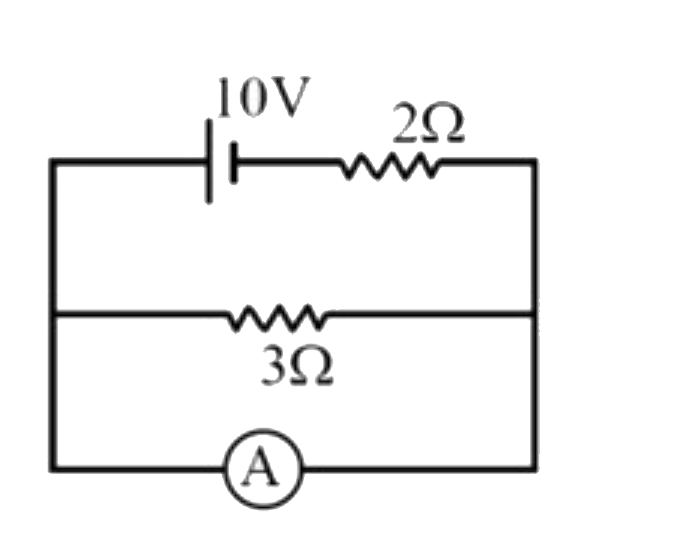
View SolutionWhat is the reading of ideal ammeter (in A) in the circuit shown in the adjacent figure ?
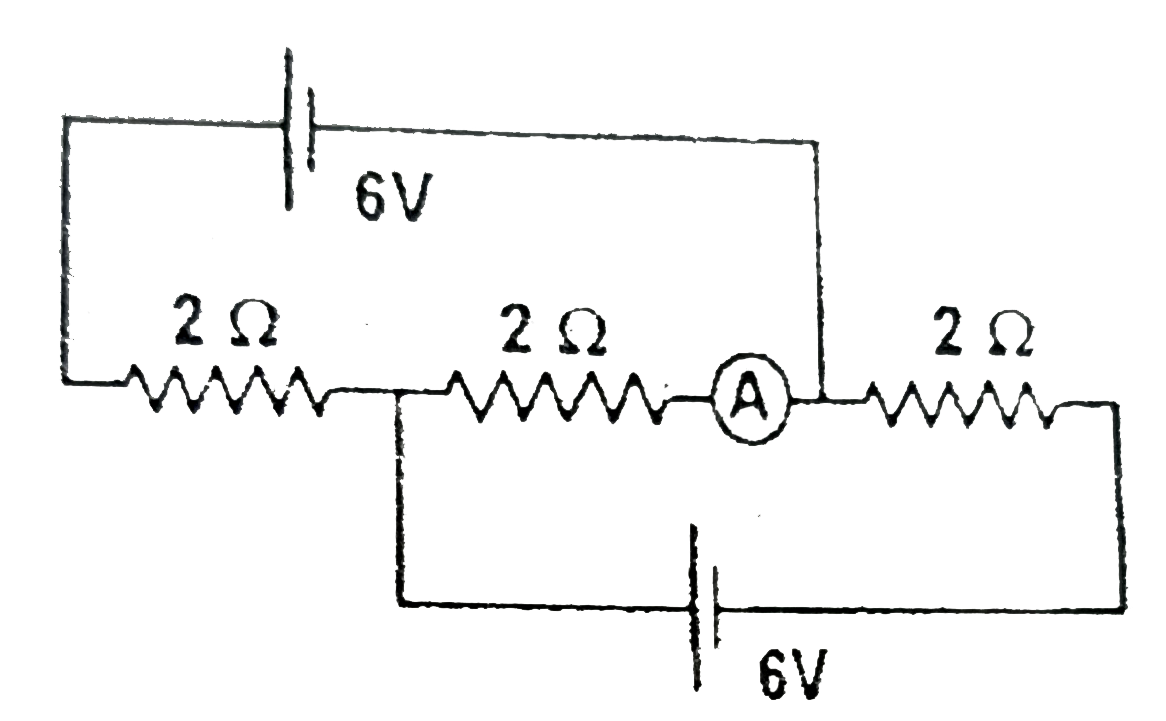
View SolutionA circuit contains an ammeter, a battery of 30V and a resistance 40.8ohm all connected in series. If the ammeter has a coil of resistance 480ohm and a shunt of 20ohm, the reading in the ammeter will be
View SolutionIn the situation shown , the readings of ideal ammeters A1 and A2 are in the ratio.
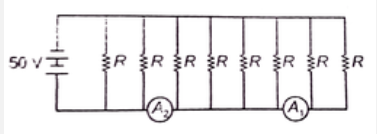
View SolutionFind the reading of ammeter ? Is this the current through 6Ω ?
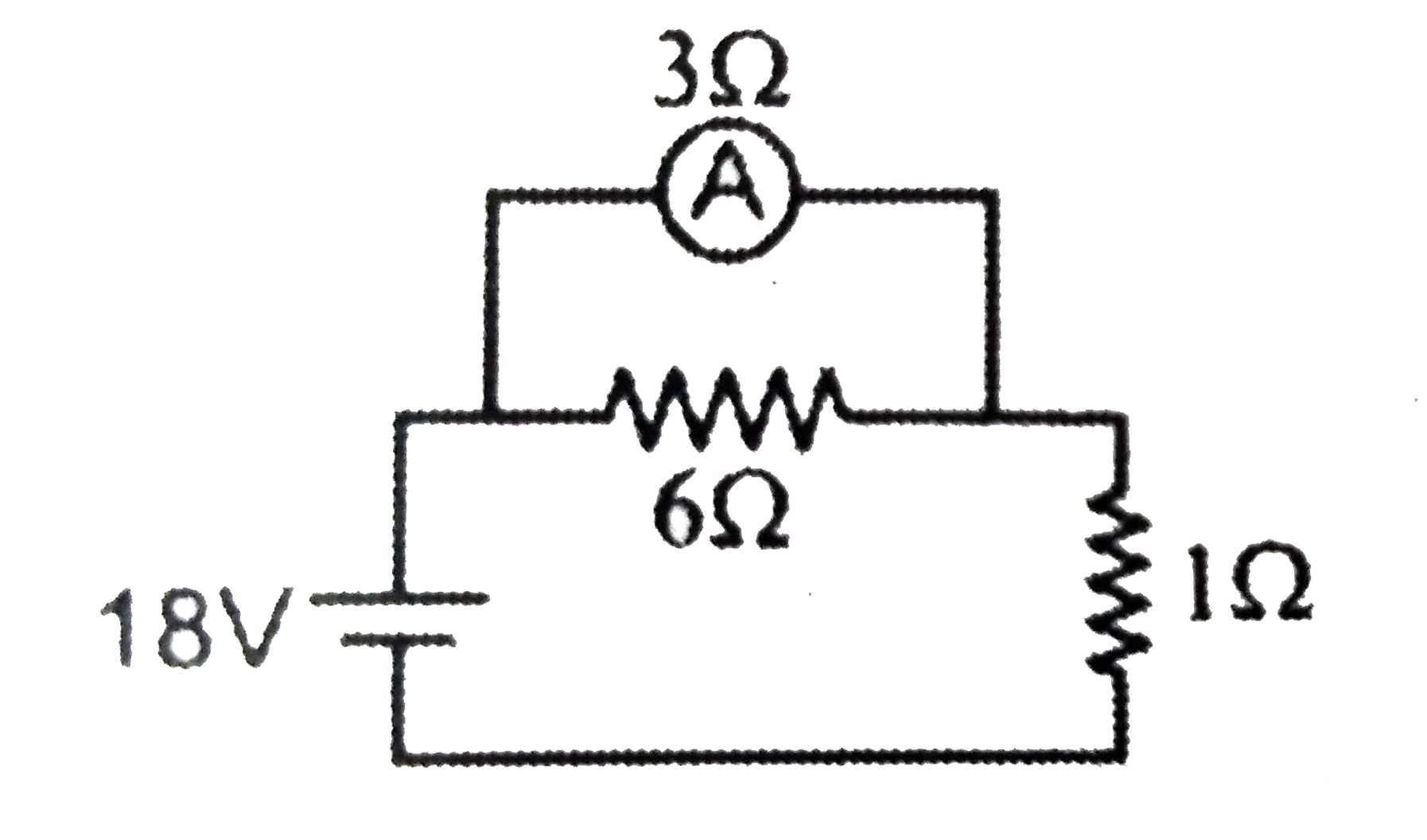
View SolutionIn the circuit shows in Fig. 6.41, the reading of the ammeter is (assume internal resistance of the battery be to zero)
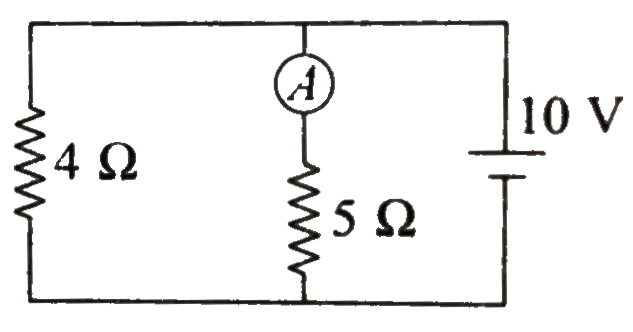
View SolutionAn ideal voltmeter V and ideal ammeter A are connected in a circuit as shown in the figure. If the reading of the voltmeter is 32 V, the reading of ammeter will be
View SolutionRedraw the circuit of Q.12, putting in an ammeter to measure the current through the resistors and a voltmeter to measure the voltage across the 12ohm resistor. What would be the readings in the ammeter and the voltmeter ?
View SolutionIn the given circuit, the reading of ideal voltmeter is E/2. The internal resistance of the battery is
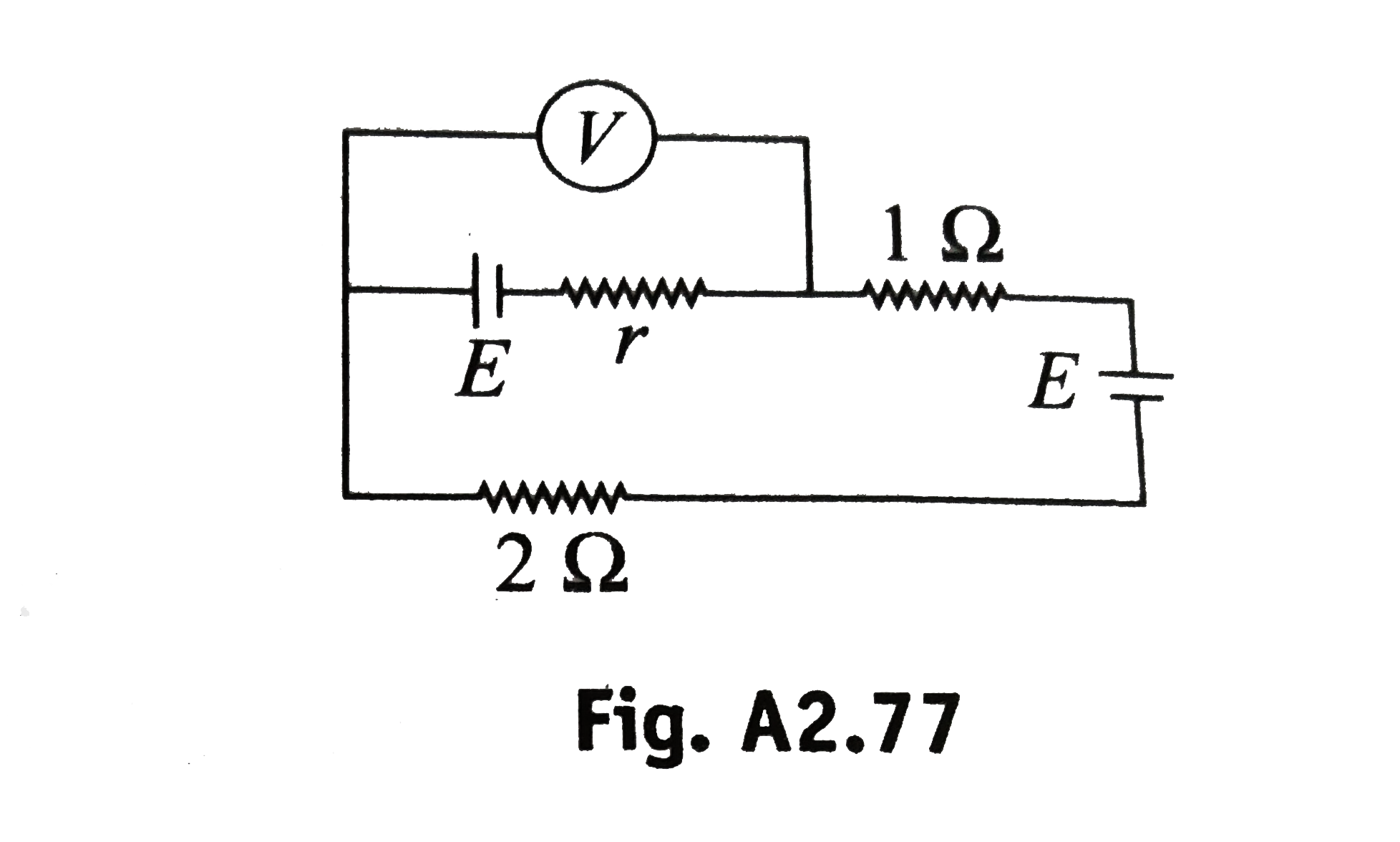
View SolutionThe reading of the ideal ammeter will be (Resistance of ideal ammeters is zero)
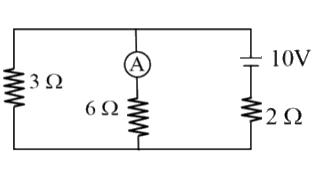
View Solution
